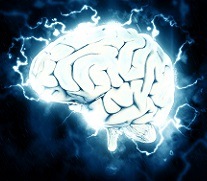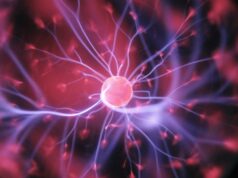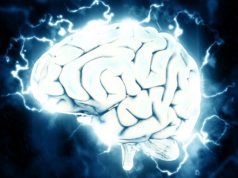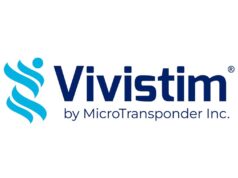 An initial evaluation of vagus nerve stimulation (VNS) in narcolepsy patients has linked this neuromodulation modality to a “significant improvement” in daytime sleepiness, leading researchers to aver that VNS could be a promising non-medical treatment option for this condition and potentially other sleep disorders.
An initial evaluation of vagus nerve stimulation (VNS) in narcolepsy patients has linked this neuromodulation modality to a “significant improvement” in daytime sleepiness, leading researchers to aver that VNS could be a promising non-medical treatment option for this condition and potentially other sleep disorders.
Writing in the journal Brain Stimulation, Yaroslav Winter (Johannes Gutenberg University, Mainz, Germany) and colleagues note that VNS is known to trigger arousal- and wake-promoting side-effects in epilepsy and depression, and these effects have also been demonstrated previously in animal experiments. However, up to now, no clinical study has directly assessed VNS therapy in patients with narcolepsy.
“A further search for new non-pharmacological treatment options is necessary,” the authors state, citing limitations around efficacy and adherence with drug therapies, as well as the various comorbidities associated with narcolepsy. “Neurostimulation has never been investigated in narcolepsy until now. It would improve the adherence and reduce the drug load in these patients. In order to prove its efficacy, neurostimulative approaches should consider the minimal important difference of about 2.5 on the Epworth sleepiness scale (ESS) or ≥25% reduction of excessive daytime sleepiness (EDS) compared to baseline, which are known from approvals of narcolepsy therapy by the [US] Food and Drug Administration or European Medicines Agency.”
As such, Winter and colleagues attempted to evaluate the therapeutic effect of VNS on narcolepsy symptoms like daytime sleepiness and cataplexies—sudden, involuntary attacks of muscle flaccidity brought on by strong emotions.
The researchers’ open-label, prospective, comparative study enrolled narcolepsy patients who were treated with VNS because of epilepsy or depression, and compared them to a control group of patients without narcolepsy who were also receiving VNS therapy due to epilepsy or depression. A total of 36 patients (average age, 31.5 years; 55.6% female) were enrolled, with 18 being included in each group. No significant differences in baseline characteristics, including disease duration, number of medications, and comorbidities, were present between the two groups. Daytime sleepiness, as per ESS scores, and number of cataplexies per week were evaluated as key outcome measures in the study, being recorded prior to implantation of a VNS device, and at three- and six-month follow-ups.
Major findings
Winter and colleagues ultimately found that—compared to an average score of 15.9 at baseline—ESS scores in patients with narcolepsy showed a significant improvement, decreasing to 11.2 at three months (p<0.05) and 9.6 at six months (p<0.001). In addition, there was a trend towards a reduction in cataplexy symptoms in patients with narcolepsy, indicated by a weekly cataplexy rate (WCR) improvement at six months (1.8) compared to baseline (3.9) that did not reach statistical significance (p=0.09).
Conversely, in the study, there was no significant ESS improvement observed in patients without narcolepsy—scores only decreased slightly, from 14.9 at baseline to 13.6 at three months, and 13.2 at six months (p=0.2). Furthermore, Winter and colleagues note that ESS improvements in patients with narcolepsy undergoing VNS therapy were found to be independent from changes in Beck depression inventory II (BDI-II) scores, and that multiple regression analysis confirmed this phenomenon. The authors also observed no significant differences in the frequency of side-effects between patients with and without narcolepsy (p>0.05), with the majority of those in both study groups experiencing no adverse side-effects.
Discussing their findings in greater granularity, Winter and colleagues highlight the positive effects of VNS on daytime sleepiness in narcolepsy patients being more notable with increased duration of the therapy—something that could be explained by the “well-known fact” that the therapeutic effect of neurostimulation increases over time, or by minimal fluctuations in ESS scores due to the study’s small sample size. They go on to state that the difference between ESS values at three and six months was both small, and below the minimum difference for importance of 2.5 points. As such, they believe the longitudinal effect of VNS in narcolepsy “should be investigated in multicentre, randomised controlled studies with larger study populations”, adding that such studies may also help to establish the effect of VNS on cataplexies.
A comparison of VNS with best medical treatment in narcolepsy may have been “out of the scope” of the researchers’ study, they concede, but they were able to register a 39.6% improvement in ESS scores at six-month follow-up versus baseline—a rate that is higher than the recommended clinically important difference for this measure (≥25%). Similarly, the absolute difference of 6.3 points on ESS between baseline and six months was higher than the 2.5-point minimal important difference, as was the absolute difference between patients with and without narcolepsy in their study at six months (3.6 points).
Wider significance
“Neurostimulation as an innovative approach to treat EDS in narcolepsy has a potential to significantly improve the management of this disease,” Winter and colleagues write. “It would prevent polytherapy in drug-resistant cases and improve adherence. Considering the data on refractory cases and poor adherence, approximately 30% of patients could be possible candidates for neurostimulation. In addition, teratogenic effects of medication could be avoided [via] the use of neurostimulation in pregnancy. Further investigation of neurostimulation in narcolepsy could provide new ways to treat this disease and to search for synergistic effects of medication in combination with neurostimulation, as is already being done in epilepsy.”
The authors do also highlight multiple limitations to the present study, including data collection not being blinded and the lack of a sham-controlled group, and note that the number of patients enrolled was not sufficient to perform subgroup analyses of different narcolepsy types; for example, across patients with or without cataplexy. In addition, Winter and colleagues say that—with an open-label design not involving sham stimulation—their study only provides level-three evidence. However, while the exact mechanisms behind this are yet to be fully elucidated, they reiterate that their findings support assumptions of an “alerting effect” with VNS and, possibly, a subsequent positive impact on EDS in narcolepsy patients.
“In conclusion,” the researchers state, “VNS could be a safe, complementary treatment option for patients with narcolepsy who did not respond to drug treatment. Our data suggest a positive effect of VNS on daytime sleepiness in patients with narcolepsy of both types. Our open-label study should motivate future randomised, sham-controlled studies on VNS in narcolepsy.”
Following the publication of this study, Winter spoke to NeuroNews to outline the wider implications of his and his colleagues’ findings, and the next steps they are planning.
“Neurostimulation is a new and promising approach to treat not only narcolepsy but also other sleep disorders,” he said. “Neurostimulation strategies in this medical field would help to reduce side-effects of pharmacological treatments and to promote neuroplasticity. Our working group is planning a sham-controlled study of VNS in narcolepsy, and also investigating other neurostimulative treatments—such as deep brain stimulation and direct focal cortical stimulation by means of EASEE system [Precisis]—for other clinical indications in the field of sleep medicine.”









